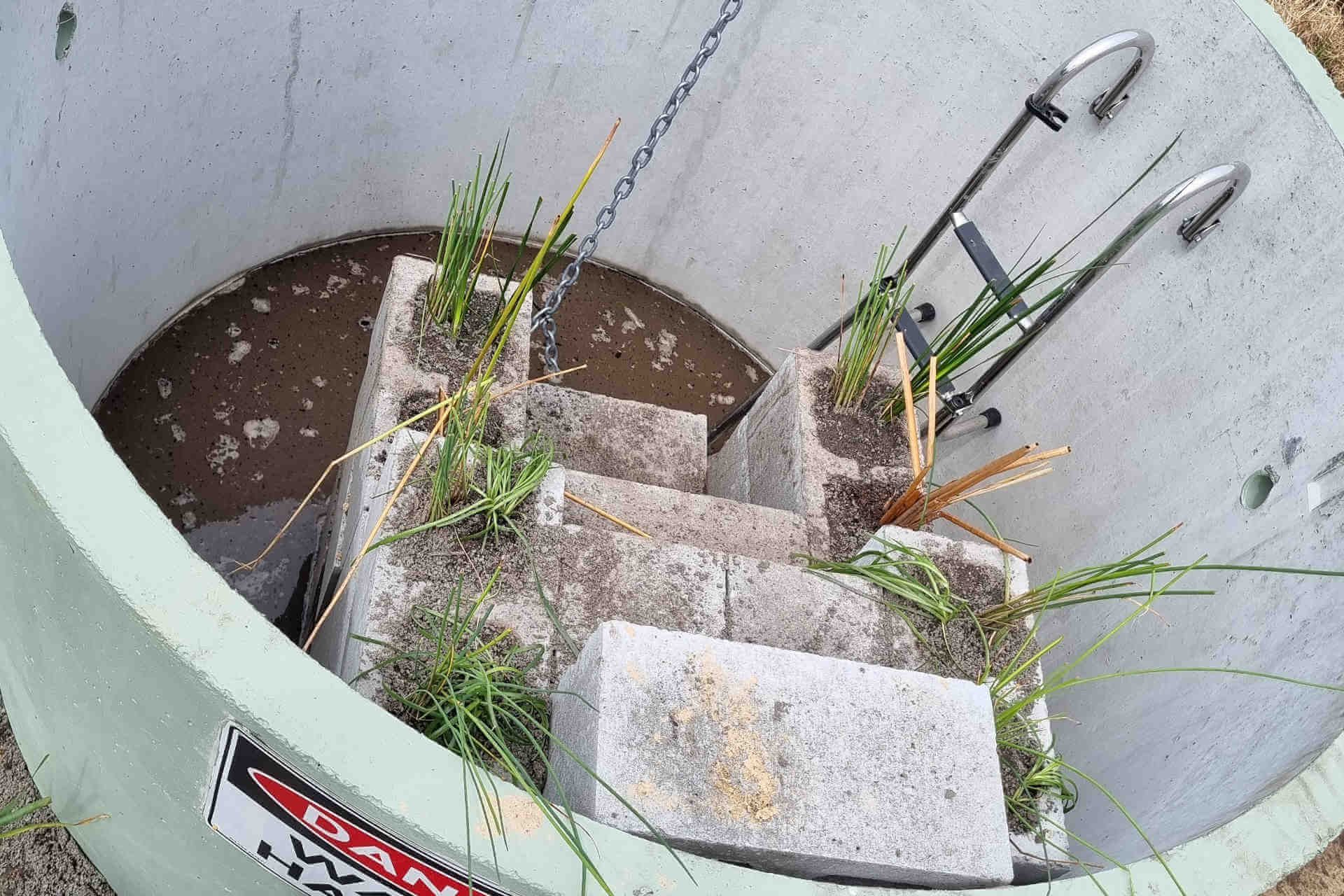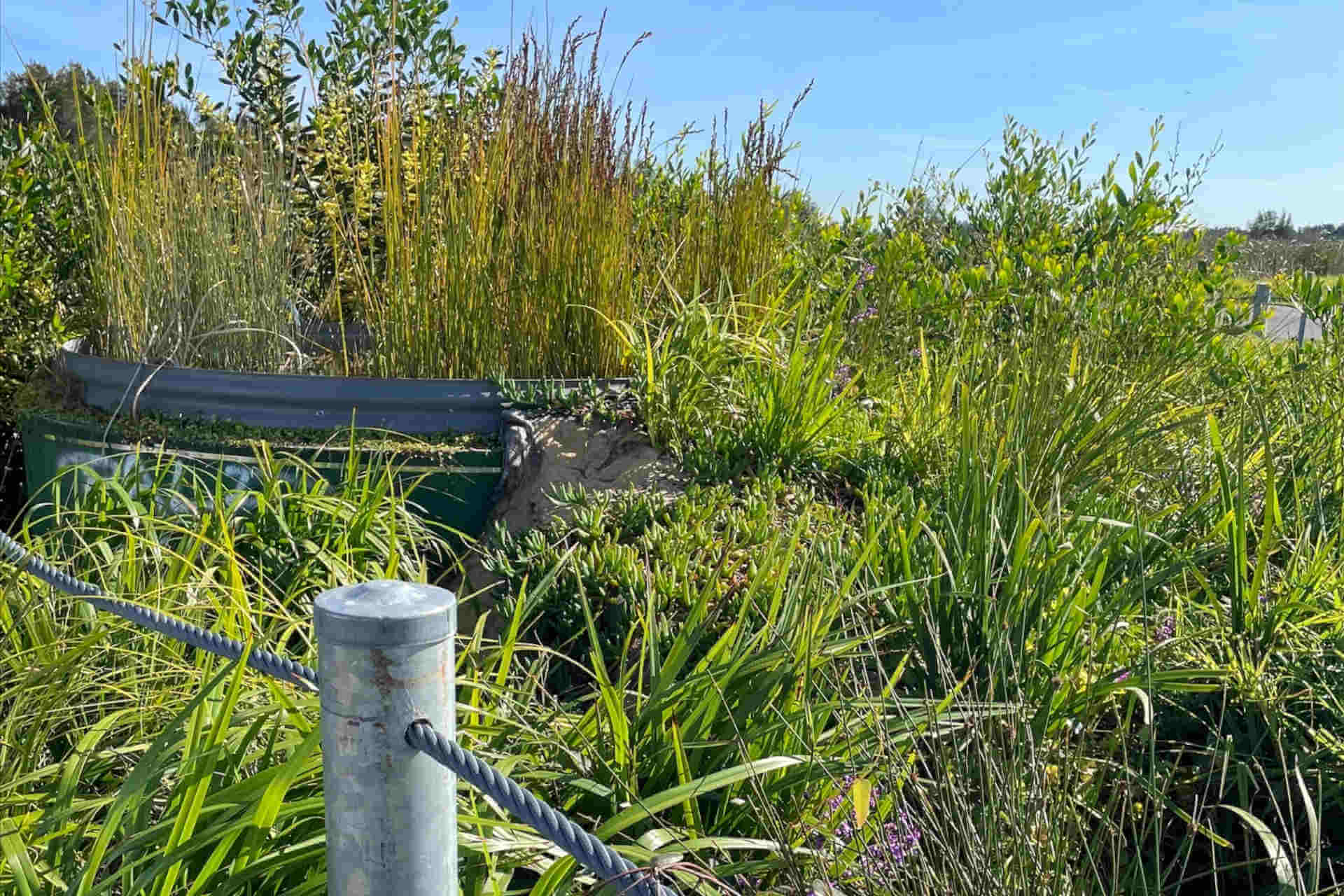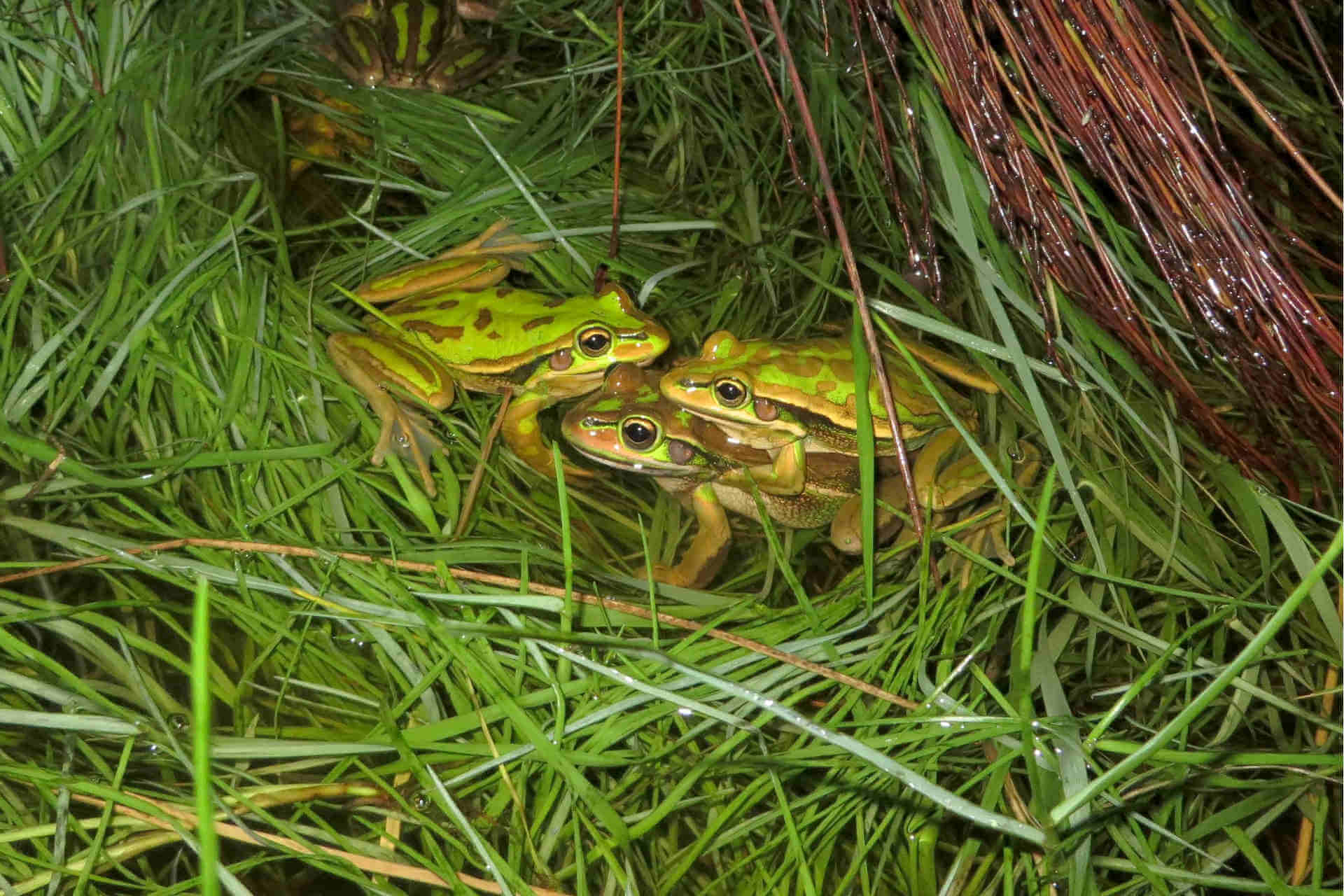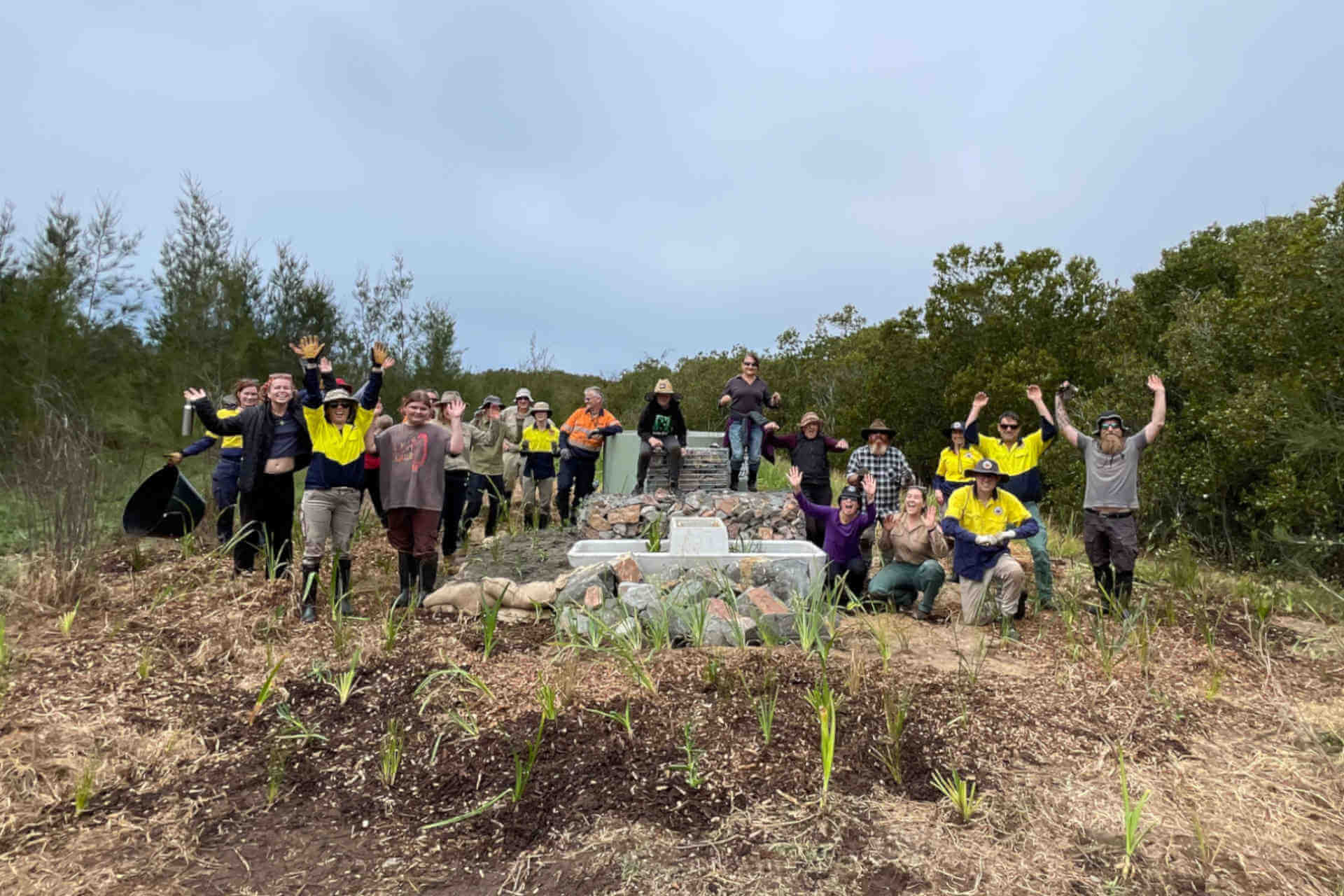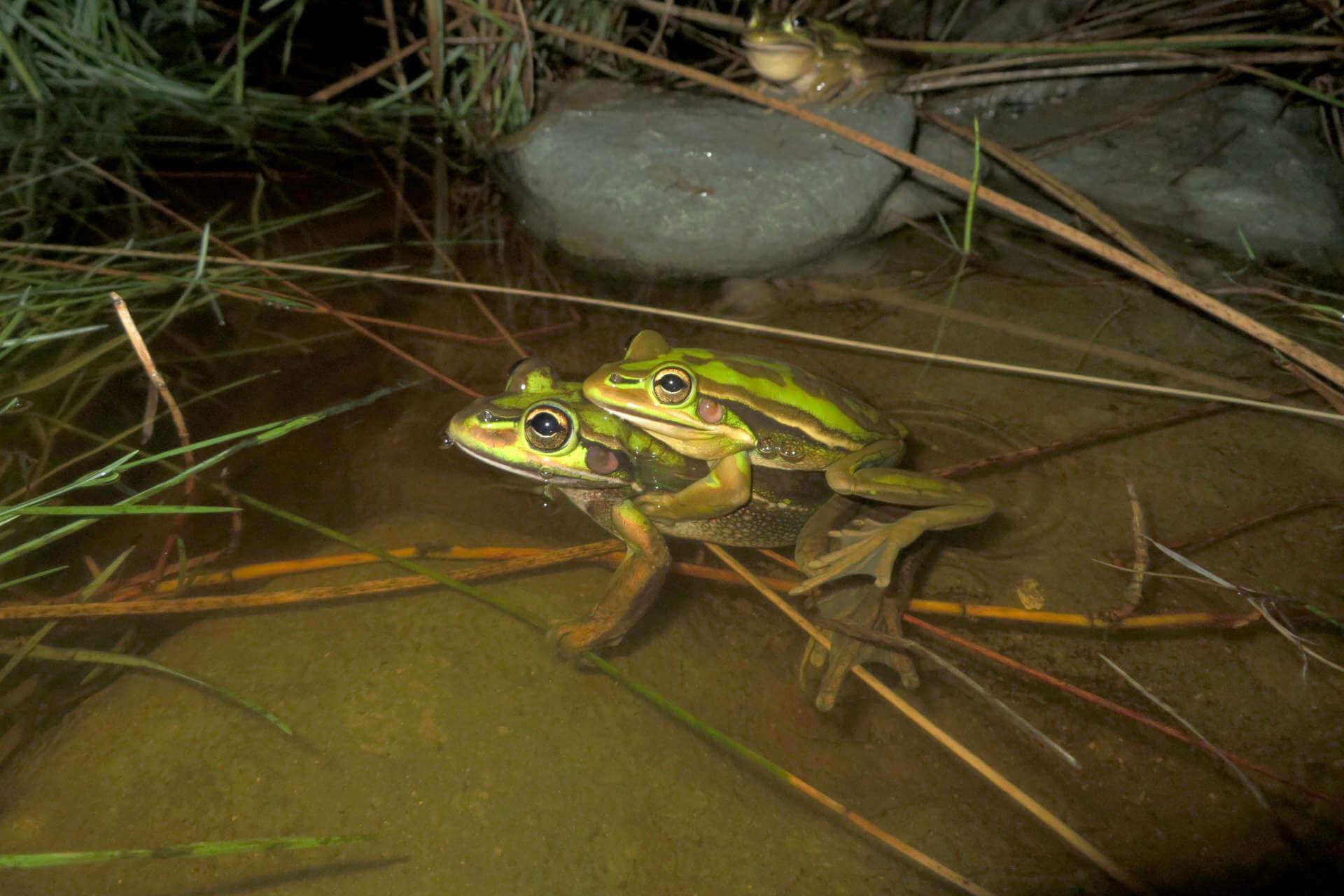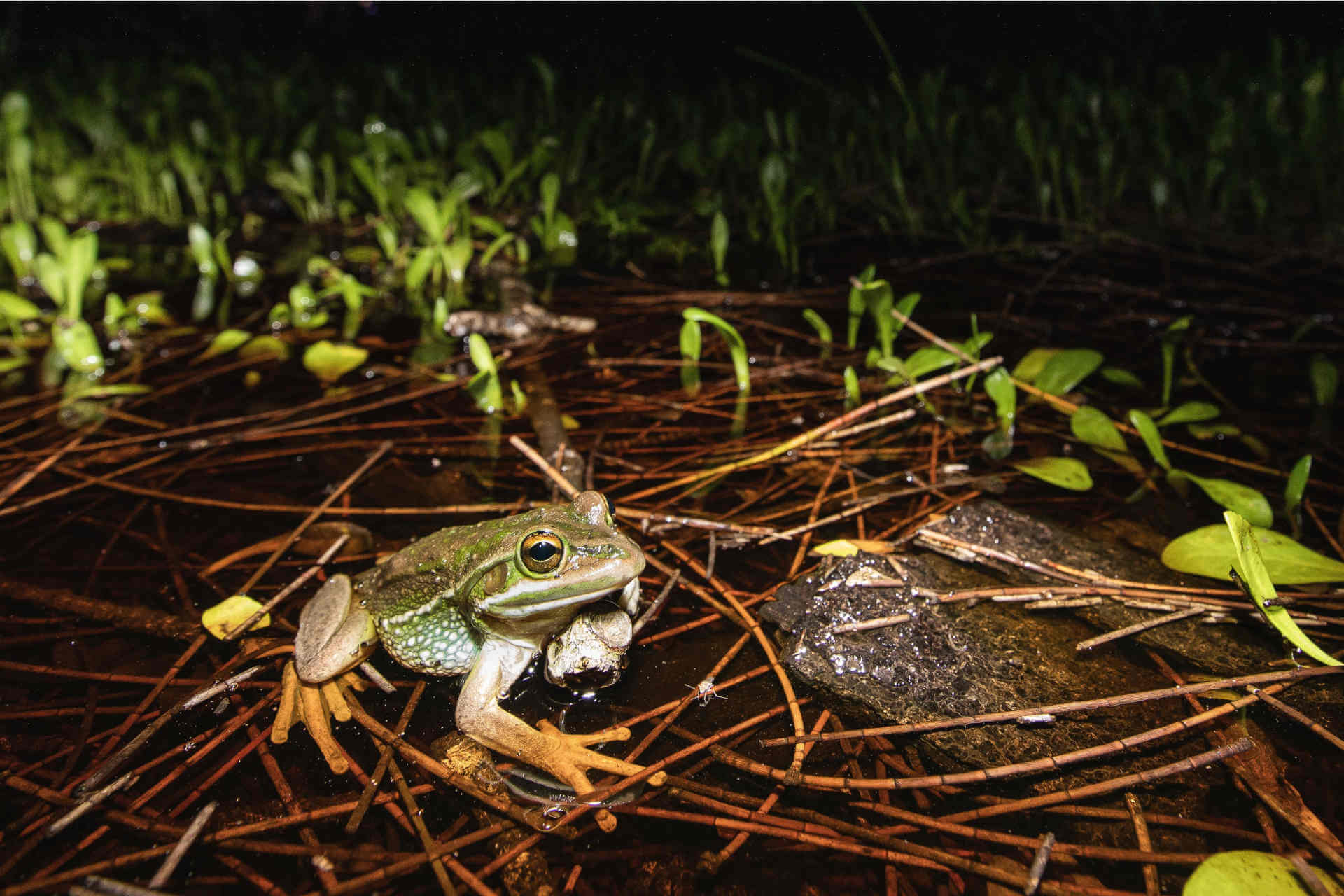Experts from the University of Newcastle realised there was little movement (or breeding) between 2 subpopulations of the endangered green and golden bell frog (Litoria aurea) on Ash Island, in the Hunter region of New South Wales within Hunter Wetlands National Park. The solution? A pool (pond) party. The university recommended constructing a series of ‘cluster ponds’, which are strategically placed beds of water, set up to ensure maximum mingling.
The green and golden bell frog is already at risk of extinction, so creating a corridor for the 2 subpopulations to mix will help the species chance of survival. There are hopes of increased breeding between the north and south cohorts to bolster numbers.
The cluster ponds, strategically placed like lily pads across the landscape, provide a permanent water source and a habitat thoroughfare for the frogs to move through.
Partners and community come together to help frogs
The first iteration of the cluster ponds project was delivered and constructed by NSW National Parks and Wildlife Service, but wouldn’t have been feasible without the help of multiple partners:
- Newcastle Coal Infrastructure Group, Port Waratah Coal Services, and the NSW Government’s Saving our Species program funded the project.
- University of Newcastle provided expert advice and conducted monitoring at the installed ponds.
- Community volunteers, and corporate volunteers from Newcastle Coal Infrastructure Group and Port Waratah Coal Services completed plantings at the cluster pond sites.
- Hunter Local Land Services provided local plants, in-kind and volunteer assistance, and shared their resources to help construct the ponds.
- Trees in Newcastle provided local plants, labour, maintenance and bush regeneration support, and volunteer event coordination.
This multi-partner project is a powerful example of how important collaboration is to achieve effective results for our threatened species. Since the installation of the ponds, and with the help of volunteers, close to 2,000 plants have been planted, and 8 sites (cluster ponds) have been established.
Erica Goldsmith, Project Officer, Conservation, National Parks and Wildlife Service Hunter Central Coast Area says this project is vital to the survival of this endangered species.
‘The construction of new "pathways" – via frog ponds – across the island wouldn’t have happened without our funders, partners, and local volunteers. The project has been a collaborative effort that very much reflects the community’s respect for the local environment.’
Start a conversation about conservation
By joining forces with conservation programs like Saving our Species, local industry corporations, universities, government agencies and community groups are truly making an impact for threatened species in New South Wales.
Explore what your organisation can do to help protect threatened species. Contact the Saving our Species Partnerships Team to start a conversation about conservation today.
Contact us
Saving our Species partnerships
Email: [email protected]
Stay in touch
- Subscribe to the partnerships newsletter.
- Follow us on Facebook, Instagram, YouTube, LinkedIn or X.
- Search the Public register of Saving our Species conservation strategies.

